Posts Tagged ‘smart on crime’
Posted on: August 12th, 2014 by Waterloo Region Crime Prevention Council
Statistics Canada released their annual Police-reported crime statistics 2013 report in July (and in French). There is always so much to sift through and interpret. But here’s a beginning summary of the highlights from the Canadian Criminal Justice Association.
The police-reported Crime Severity Index (CSI), which measures the volume and severity of crime, declined 9% in 2013 compared with 2012. This was the 10th consecutive decline in the index. The CSI was 36% lower than 10 years earlier.
The traditional crime rate also declined in 2013 compared with 2012, falling 8%. It continued its long-term downward trend that began in the early 1990s, reaching its lowest level since 1969. Since 1962, the traditional crime rate has measured the volume of crime, but does not take into account the severity of crimes.
Canadian police services reported just over 1.8 million criminal incidents (Criminal Code offences excluding traffic) in 2013, down approximately 132,000 from the previous year.
Most offences were down in 2013. The decline in the CSI was specifically attributable to declines in breaking and entering and robbery. Decreases in some of the less serious but very frequent offences, such as theft of $5,000 or under and mischief, also contributed to the drop in the CSI.
However, some offences were up in 2013. In particular, police services reported more incidents of extortion, child pornography, aggravated sexual assault (level 3), sexual violations against children and identity fraud.
Crime Severity Index down in most provinces and territories
In 2013, most provinces and territories recorded a decrease in their CSI compared with 2012. However, the CSI increased in Yukon (+6%) and Newfoundland and Labrador (+1%).
Prince Edward Island, New Brunswick, Quebec and Manitoba (-12% each) recorded the largest declines among the provinces and territories.
In most provinces, the decline in the CSI was largely due to fewer breaking and entering incidents. However, in British Columbia, robberies were behind the decline in the CSI. In the Northwest Territories, a decrease in homicides resulted in the drop in the CSI, whereas the decline in Nunavut was due to a large decrease in incidents of mischief.
As in previous years, each territory had a higher CSI than any province. Saskatchewan had the highest CSI among the provinces, while Ontario had the lowest.
Crime Severity Index down in almost all census metropolitan areas
For the first time since 1998, the first year for which the CSI was calculated, none of Canada’s census metropolitan areas (CMAs) recorded an increase in its CSI. The CSI was unchanged in Edmonton, while it declined in all other CMAs. The largest decrease compared with 2012 was in Victoria (-17%).
Despite a 7% drop in its CSI, Regina had the highest CSI of any CMA, while Barrie and Guelph had the lowest.
Violent Crime Severity Index continues to decline
The violent CSI fell 10% in 2013 compared with 2012, marking the seventh consecutive decrease.
Canadian police services reported approximately 384,000 violent incidents in 2013, down about 32,000 from the previous year. The decline in the violent CSI was mainly due to a decrease in robberies and, to a lesser extent, fewer assaults with a weapon or causing bodily harm (level 2), common assaults (level 1) and uttering threats.
Police reported 505 homicides in 2013, down 38 from 2012. The homicide rate was 1.44 victims per 100,000 population, the lowest rate since 1966. Police also reported 642 attempted murders in 2013, down 23 from the previous year.
Every province and territory except Newfoundland and Labrador saw a decrease in their violent CSI compared with 2012. Similarly, every CMA saw their violent CSI decline except Trois-Rivières, St. John’s, Brantford and Calgary, which recorded increases.
Increase in police-reported “sexual violations against children”
In 2013, the police reported 4,232 incidents in the “sexual violations against children” category, 279 more than in 2012. This was one of the only violent crime categories to increase in 2013.
The “sexual violations against children” category includes five specific offences under the Criminal Code: luring a child via a computer, sexual exploitation, sexual interference, invitation to sexual touching and making sexually explicit material available to a child. However, this category excludes sexual assaults against children, which are classified with all other sexual assaults, including those against adults.
Of the sexual violations against children, luring a child via a computer showed the greatest increase, rising 30% in 2013, followed by sexual exploitation (+11%). In contrast, invitation to sexual touching decreased 5%.
Non-violent Crime Severity Index is down
Most crimes reported by the police are non-violent. Police reported just over 1.4 million non-violent incidents in 2013, or nearly four crimes in five, of which 1.1 million were property crimes. The non-violent CSI decreased 8% compared with 2012, the 10th consecutive decrease in this index. The non-violent CSI was 40% lower than a decade earlier.
While most non-violent offences declined in 2013, the decrease in the non-violent CSI was mainly due to a large drop in the number of incidents of breaking and entering, theft of $5,000 or under and mischief. However, some offences in the non-violent category rose in 2013, specifically counterfeiting, child pornography and identity fraud.
Almost every province and territory saw their non-violent CSI decline in 2013. The largest decreases were in New Brunswick and Prince Edward Island, while the non-violent CSI was stable in Newfoundland and Labrador and increased in Yukon.
Most CMAs also saw a decrease in their non-violent CSI except Edmonton, where the index rose in 2013 as a result of more motor vehicle thefts and theft of $5,000 or under.
Youth Crime Severity Index down for the fourth consecutive year
The youth CSI fell by 16% in 2013 compared with 2012, the fourth consecutive decline. The youth CSI measures the volume and severity of crimes for which an accused aged 12 to 17 was identified.
The decline in the youth CSI was mainly due to fewer youths accused of robbery, breaking and entering or theft of $5,000 or under.
Every province and territory except Yukon saw their youth CSI decline compared with 2012. Among the provinces, Saskatchewan recorded the highest youth CSI, while British Columbia, Ontario and Quebec had the lowest.
With the release of the Statistics Canada report also comes analysis and critique of the statistics. Here’s a few that we read:
Did you see anything that surprised you in the Statistics Canada report? Encouraged you? Alarmed you?
Posted on: June 30th, 2014 by Smart on Crime
We believe in just and humane approaches to crime and its consequences. It says so right in our organizational value statements. And we love it when we can point to other examples of people and organizations walking the talk on this value.
Insight-Out shows that personal transformation can be a powerful force for rehabilitation before punishment. In the United States, “the system profits by its own failure’, remarks Jacques Verduin, Insight-Out founder & facilitator. And he vows to change that, person by person with a year long program called GRIP.
Does society really benefit if we abandon people in prison? What does ‘ just and humane approaches to crime and its consequences’ look like to you? What does it look like in Canada?
Read a full article about Insight-Out on the Daily Good – Guidng Rage into Power.
Posted on: June 19th, 2014 by Smart on Crime
Prior to my Master of Social Work student placement at the Waterloo Region Crime Prevention Council (WRCPC) in January of 2014 I had very little, if any, knowledge of the concept of ‘the root causes of crime’. I knew quite a bit about human development, that we are all products of our past experiences, and it was pretty clear that crime is likewise a result of countless influences; it is so much more than ‘bad people’ doing ‘bad things’. What we do and how we decide to act is dictated by all of the tiny events that make up our lives be they happy or sad, wonderful or traumatic, important or seemingly insignificant. The WRCPC addresses these root causes, this infinite web of experiences and events, to help prevent crime before it occurs.
So it sounds pretty simple right? Address the causes before they lead to trouble, is it really that revolutionary? After spending the past six months with this team I can say with conviction that yes, yes it is! There are so few organizations that dedicate their time and effort solely to the prevention of crime and the study of root causes of criminal activity. If you don’t believe me try to search ‘crime prevention’ or ‘root causes of crime’ in any major search engine and not find something about the WRCPC on the first page. Working with this organization has opened my eyes and, to borrow their phrase, I have a better understanding of how to be ‘smart on crime’. Now it is far easier for me to consider the whole picture rather than simply looking at the end result. Because crime is so complex and intricate, it requires equal complexity and intricacy in order to effectively address it.
If you will, I would like to share with you my understanding of what the WRCPC really is. Rather than explaining the organizational chart of the WRCPC, which, I am by no means an expert, this is a map of my experiences with the WRCPC. Becausethe majority of the work that the WRCPC does involves providing support, information, and networking opportunities for other human service organizations in the Region, they rarely get the chance to advertise the fantastic work that they do.
The following image is an embodiment of my experiences at the WRCPC. These are the things that I directly witnessed or had a role in completing during my stay and I am sure that I didn’t get it all.
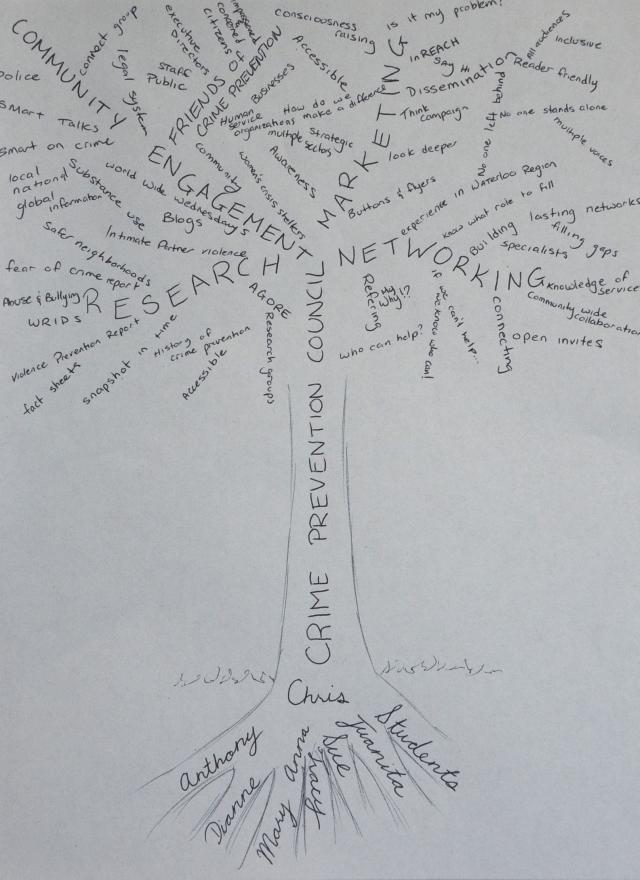
Ryan’s Mind Map to illustrate how he understands crime prevention through social development.
The six staff members are the very foundation of the council, providing the nourishment and support that is needed to complete this vast array of work. Each member plays a significant role and sustains an entire branch of ‘crime prevention’. Christiane Sadeler is the bridge between the staff and the council itself (a body of impassioned community members representing the human services sectors throughout the Region). With this sturdy foundation of staff and council members all of the tremendous work is completed. From academic research to community engagement the WRCPC addresses ‘crime prevention’ from all angles.
It has been such a pleasure to work within this jumbled group. I have learned so much and had the pleasure of working with such meaningful and impactful projects. If you have never had the opportunity to work with crime prevention or just want to know more about what it means do what I did; become a Friend of Crime Prevention. Let’s attend a meeting and have a real discussion about the ways we can make our Region stronger, healthier, and happier. There is always more that can be done and my journey is nowhere near complete.
Author: Ryan Maharaj, MSW Student with WRCPC. Ryan recently moved to Waterloo in pursuit of his Masters in Social Work at Wilfird Laurier University. Placed at the Waterloo Region Crime Prevention Council, he has been given the opportunity to explore the role of male allies in the movement against sexual and intimate partner violence. He firmly believes that with respect, support, compassion, and education we can prevent the occurrences of sexual violence in the next generation.
Posted on: May 14th, 2014 by Smart on Crime
The conclusion of the InREACH project has been the topic of many well-intended discussions at all levels of our community but we haven’t yet moved to the point of integrating the lessons learned to ongoing or upcoming projects.
 On Friday April 11th, the Waterloo Region Crime Prevention Council hosted “Engaging Marginalized Youth: Harnessing Experience from the InREACH Project” to provide a space for a diverse group of community members – individuals, agencies and neighbourhoods that were involved in the InREACH project – to begin moving from idea to action. Our community learned some very rich and important ‘lessons’ from the inREACH project and the gathering was intended to help the community determine “where do we go from here”. A number of promising ideas were brought to the table, but when all the focus is placed on the next steps, we have a habit of overlooking the negative and possibly dismissing the barriers that inhibit successful implementation.
On Friday April 11th, the Waterloo Region Crime Prevention Council hosted “Engaging Marginalized Youth: Harnessing Experience from the InREACH Project” to provide a space for a diverse group of community members – individuals, agencies and neighbourhoods that were involved in the InREACH project – to begin moving from idea to action. Our community learned some very rich and important ‘lessons’ from the inREACH project and the gathering was intended to help the community determine “where do we go from here”. A number of promising ideas were brought to the table, but when all the focus is placed on the next steps, we have a habit of overlooking the negative and possibly dismissing the barriers that inhibit successful implementation.
It’s easy to assume that we should apply what we’ve learned from the inREACH project to better support marginalized youth in our community. But have you every stopped to wonder, what happens if we ignore what we’ve learned? What if we shed the rose-coloured glasses and donned the shades of pessimism to see the barriers that stand in our way? What if we tried to see the glass half empty? How can we make a problem like street gangs in Waterloo Region, worse?
Well, let’s see…
- Never discuss inREACH again
- If you absolutely have to discuss inREACH, hold meetings at inaccessible locations when only few people can attend, and only invite individuals who have the power to tie up discussions with bureaucratic process
- Do NOT, under any circumstances, collaborate or foster relationships with other youth serving organizations because it just makes things messy
- Scrap the evaluation and stick it on a shelf. Treat it like it is only the opinion of the evaluator anyway and discredit it
- Speak FOR the youth; adults and service providers know best. Youth are just too young and don’t know what they want
- If anyone asks you about inREACH, only talk about the numbers – how many youth participated, how many completed, etc. Don’t tell the personal stories of change
- Cut funding for youth programs and foster competition over limited remaining resources…. Better yet, just close the services
- Ensure that the remaining youth services only exist in silos and it is really difficult for youth to access them
- Never convene collaborative opportunities for our community to talk about improving our services
- Burn the rest of the inREACH posters and brochures so the program is effectively erased from our collective memory
- Don’t recognize the contributions of all youth in our community and only hand out awards to those that excel at everything
- Use only images that stigmatize youth
- Keeping focusing on the closure of inREACH as a sign that we can do nothing more for youth
Are you getting the picture? Are you thoroughly depressed by the very thought of these ideas?
I’ve used a technique here called ‘reverse brainstorming’ (with some dramatic effect), to emphasize how ridiculous it would be if we ignored what we’ve learned from inREACH and along with it, the potential for positive change. But the important thing here is that it’s not too far fetched if we really do nothing with the gift of what we’ve learned through the inREACH project. The reality is, our region is a growing community and is very close to larger urban centres. We need to keep a focus on prevention approaches so that street gangs do not become a larger problem in our community.
In a reverse brainstorming exercise, those involved would take each spine shivering negative option and flip it to the positive. That is essentially what happened at the “Engaging Marginalized Youth” event but what to do with it? How do we bring all of these lofty suggestions and grand themes together to collaboratively apply the lessons of InREACH? What can we base our practice on?
While the community is working to shape the next phase of work work with marginalized youth, I offer this resource as food for thought. WRCPC has found the work of Tom Wolff, community psychologist, to be inspiring, grounding, and effective in establishing collaborative practice. He presents six principles of collaboration (Wolff, 2010):
- Encourage true collaboration as the form of exchange
- Engage the full diversity of the community, especially those most directly affected
- Practice democracy and promote active citizenship and empowerment
- Employ an ecological approach that builds on community strengths
- Take action by addressing issues of social change and power on the basis of a common vision
- Engage spirituality as your compass for social change
With these six principles in mind, how can we revisit the reverse brainstorming activity above and critically challenge ourselves? Are we using these principles above in our process of applying and disseminating the lessons of InREACH? We can develop our practice to include marginalized youth. inREACH showed us that. We would love to hear your suggestions and thoughts for next steps either through comments below or during future meetings.
If you’re interested in reading more about the “Engaging Marginalized Youth” event, a summary of the event discussion & next steps is available. WRCPC will do its part in continuing the discussion and they are looking to the community to take further leadership. For more information please contact the Waterloo Region Crime Prevention Council office, by email or telephone, 519.883.2306.
Author: Ryan Maharaj, MSW Student with WRCPC. Ryan recently moved to Waterloo in pursuit of his Masters in Social Work at Laurier University. Placed at the Crime Prevention Council, he has been given the opportunity to explore the role of male allies in the movement against sexual and intimate partner violence. He firmly believes that with respect, support, compassion, and education we can prevent the occurrences of sexual violence in the next generation.
Posted on: April 17th, 2014 by Smart on Crime
We all agree that both the direct and indirect victims of crime deserve society’s help and support. Victims want services to help them come to terms with their trauma, loss, and grief so they can move on. Government supported services, compensation for their injuries, and measures to prevent both the occurrence and reoccurrence of crime are important to victims of illegal action. Recently, the Victims Bill of Rights has proposed to provide this support not by establishing government programs for victims’ assistance but instead by giving victims legal rights and a role at the heart of the justice system. But this role for victims represents a departure from the principles of criminal justice embedded in our legal tradition and protected by the Charter of Rights and Freedoms.
Progress in the development of criminal law was marked by an evolution away from private disputes between victims and alleged wrongdoers and toward the administration of justice by the state. As mentioned in October 27, 2013 opinion piece in the Star:
“one of the greatest innovations of the criminal justice system was the realization that the wrongful injuries people inflict are primarily offences against the public moral order represented by the Queen, not just particular harms to individuals in a given situation.”
While individuals could sue in civil cases to recover for losses resulting from wrongdoing, it was the state that ensured that punishments for wrongdoing responded to criminal harm as an injury to the values of a stable, secure society. In this role, the duty of the state was to punish the criminal harm to the victim while still respecting the basic humanity of the criminal. This second branch of the state’s duty secured the rights to fair trial and appropriate punishment on conviction for the accused, which are the hallmark of the just society. The era of the blood feud and the personal vendetta was over.
The extent to which the present Victims Bill’s ‘rights’ will in fact put victims at the heart of the criminal justice system may be illusory. Bill C-32 is clear that the only parties in the criminal justice system will continue to be the accused and the Queen. The Bill also provides that the rights of victims will be applied in a reasonable manner so as not to disrupt the “proper administration of justice” by causing delay or interfering with the discretion of the criminal justice system decision makers. Victims are expressly not made parties, interveners, or even observers in any criminal justice proceedings. No right to seek a judicial remedy, no claim for damages, and no appeal arises if victims’ rights are infringed. Expectations by victims about their entitlements from the justice and corrections system may well exceed what already over-burdened justice and correction officials are able to provide and victims may well feel disappointed by their newly acquired rights. The only remedy provided in the Bill for that disappointment is the capacity to file a complaint. In view of all these limitations, victims may well come to question whether they received a Bill of Rights or a Bill of Goods.
Definition of Victim
‘Victim’ is defined broadly in the Bill as an “individual who has suffered physical or emotional harm, property damage or economic loss as a result of the commission or alleged commission of an offence”. The offender is expressly excluded but his or her family members who may have incurred harm or damage as a result of the crime are not. If the victim is deceased or incapacitated, the Bill specifies the next of kin or care provider who may exercise the victim’s rights. While the definition of victims refers to ‘individuals’, ‘communities’ are also authorized to make victim impact statements. It is unclear what collection of interests will constitute a ‘community’ and whether community victim impact statements will be considered at all stages of the criminal justice process or just at sentencing.
Rights for Victims
Bill C-32 includes four categories of rights for victims relating to information, protection, participation, and restitution. Generally, providing information about the criminal justice and corrections system and ensuring adequate protection for victims in the criminal justice system is desirable as long as they do not infringe the accused’s ability to make full answer and defense or privacy rights. Since it is the proposed rights to participation and to restitution that pose the most significant challenges to maintaining a fair and effective justice and corrections system, we will concentrate on those.
The victim’s participation rights include the right to convey and have considered his or her views about decisions to be made relating to the investigation, prosecution, and adjudication of the alleged offence and also regarding the corrections and conditional release process. As written, this appears to include the right to provide victim impact statements at each stage which will have to be taken into account.
Unavoidably, these new procedures will cause delays. Despite falling crime rates, the criminal justice system is already overburdened and slow. Long waiting times are not only difficult for those awaiting trial, particularly if they are in detained in remand facilities, but they can violate rights to a speedy trial resulting in an inability to bring an accused to justice. Decision makers in the justice system try to move cases toward resolution as efficiently and fairly as possible. Not only will these decision makers be required to provide information to victims who request it, but they will now be asked to consider the views of the victims about the decisions they are required to make. The decision maker will also be compelled to receive and consider a victim impact statement. While this would take time even if there were only one victim, it would become quickly unmanageable with complex cases involving multiple victims, such as a sophisticated fraud or terrorist incidents. If the stated participation rights of victims lead to costly delays or result in prosecutions having to be dropped due to violations of the Charter right to a speedy trial, is justice served?
Further, victims’ participation rights could conflict with justice officials’ obligations to make impartial decisions when exercising their discretion. For example, a prosecutor may decide whether to proceed to trial with charges based on the public interest and the likelihood of a conviction. A victim impact statement reflecting the trauma experienced by the individual may not be relevant to the determination facing the prosecutor yet he or she would be required to consider it. It is not in the public interest to proceed to trial if there is no chance of a conviction despite a prosecutor’s sympathy for the plight of the victim.
Bill C-32 provides that every victim has the right to have the court consider making a restitution order against the offender and have it enforced as a civil court judgment. The introduction of a right to have monetary order for the victims considered by the court skews both the principles and practices of the criminal justice system. As already discussed, most modern criminal justice systems have evolved away from a system of monetary penalties paid by the criminal or the criminal’s family to the victim. Some countries still have criminal justice systems that include ‘blood money’ — a pay out to victims in satisfaction of a crime. With the proposed Victims Bill of Rights, this outdated practice could be revived in Canada.
While empowering judges to consider ‘restitution’ and even ‘compensation’ is not new, these concepts have been embedded in criminal justice principles. ‘Restitution’ historically had been based on principles of precluding unjust enrichment and benefitting from one’s crime. If a person had stolen property or had sold it, the court could order the property or proceeds of the sale be returned. Over time, the understanding of ‘restitution’ changed to include damages for harm caused to the victims. Orders for restitution or compensation became sentencing options for the judge to consider in assessing the totality of the punishment. In this way, the monetary award is limited by what was a fair and proportionate penalty for the offence. If the offender paid a monetary award, this would discharge some of all of his or her punishment for the crime. Nothing precluded the victim from seeking further damages through a civil court process.
Fines and other punishments involving monetary payment by the offender raise some profound fairness issues in the criminal justice system. Simply put, it is much less onerous for a wealthy person to pay a fine than a poor one. Unless something like a day-fine system is adopted where the fine is based on percentage of income, then this type of sentence violates the equality of punishment essential to a fair criminal justice system. Accordingly, judges have imposed fines, surcharges, restitution and compensation orders with restraint.
While normally judges are required to assure themselves that the offender is capable of paying a fine before imposing it, the Victims Bill of Rights specifically provides that the offender’s financial means or ability to pay does not prevent the court from ordering restitution. Far too many accused are poor, marginalized, battling mental health and addictions and without the lawful means to provide financial compensation to others. If a judge does not impose restitution as part of the sentence, he or she will have to explain why. Judges will likely feel more pressure to make these awards.
The preference for restitution orders also builds an undesirable incentive into the system. With the possibility of having damages covered by just filing a form with the courts, how many more people will identify themselves as victims? How many victims will forego the possibility of an easy recovery of losses to participate in restorative justice practices or other measures that might resolve the issue outside of the formal justice system?
The rights to restitution run the risk of inappropriately importing civil justice concepts into the criminal justice system and undermining core principles of fairness.
Conclusion
The Victims Bill of Rights creates a tension: If the victims’ rights as set out in the Bill are applied, they threaten to undermine principles of criminal justice by placing victims at the heart of the criminal justice. This would erode core principles by slowing down an already overburdened system and skewing it toward a tool for personal vengeance and away from objectivity. If the victims’ rights as set out in the Bill are not applied, then victims will be disappointed and their confidence in the criminal justice system will be further reduced. And there is every reason to believe that the promised rights for victims will fall short of expectations. The Bill provides victims with no standing in the proceedings, a complaint mechanism as a remedy for breached rights, and requires that the Bill be interpreted reasonably so as not to delay proceedings or interfere with the discretion of justice system officials. Rather than create a tension between justice principles and victims’ rights that will be felt by victims and justice and corrections officials at every stage of the system, it would have been better to focus on rights to victims’ services, state-guaranteed compensation, and victim prevention measures. These would have addressed some of the real needs of victims without creating likely harmful pressures and unrealistic expectations of the criminal justice system.
 Author: Catherine Latimer spent many years as a legal policy analyst for the federal government, both at the Privy Council Office and later as the Director General of Youth Justice Policy at the Department of Justice.
Author: Catherine Latimer spent many years as a legal policy analyst for the federal government, both at the Privy Council Office and later as the Director General of Youth Justice Policy at the Department of Justice.
In 2011, she became the Executive Director of the John Howard Society of Canada, a charity committed to just, effective, and humane responses to crime. Ms. Latimer has a law degree from Queen’s University and a M.Phil. from the University of Cambridge.
She is also a part-time professor at the Faculty of Law, University of Ottawa. Her interests are in criminal justice, youth justice, corrections laws, human rights, justice systems programs and policies, and policy and law reform.
Reprinted with permission from the author.
Posted on: April 10th, 2014 by Smart on Crime

My path in crime prevention started almost 20 years ago; my formal path that is. But, even prior to that, my work with those who were marginalized and/or victimized was also “crime prevention”. I just didn’t know it then. I certainly didn’t call it that. I know better now!
Justice goes well beyond the walls of courthouses and prisons to the heart of citizen capacity and imagination. In a way, justice lives in a tension between security and democracy. Security, of course, frequently uses methods to exclude certain people from certain places. Democracy, on the other hand, can be measured by the extent of our willingness and ability to include all people. Places where everybody matters, even those, or maybe especially those, who make us somewhat uncomfortable, are something to aspire to in democracy. But measures of security will often tell us the opposite. Herein lies the rub. And it is often no more obvious than in our interventions with youth.
Throughout time youth have caused us some discomfort. Not because of whom they are, but because of the associations that have been created between youth and crime. How we treat those who are in that critical transition between childhood and adulthood is an essential measure of the character of our community. How we interact with youth, how we express ourselves to and about them, says so much about us. It may not actually have a whole lot to say about them.
“We must learn to work for young people but also with young people. Our society must learn to trust them and avoid generalizations which stigmatise them, or portray them as potential criminals. The challenge to us all is to guarantee the legitimate right to safety of each and every person without discrimination and the scapegoating of youth.” (European Forum on Urban Safety, 2000).
It is good news then that progress often seeds itself in grounds of dissonance. Discomfort can be an opportunity for growth and learning if we only allow it to be.
inREACH was a golden opportunity. It brought discomfort in so many ways that we can only be grateful. We got to test assumptions about youth generally and street gang prevention specifically. We ended up rocking our boat of easy answers.
I am no expert in crime prevention. I have searched high and low for such person and have yet to find one. I am certainly not it. There are no bumper stickers in crime prevention no matter who brings them to you (and sometimes those who bring them have formidable power). The issues of crime, youth crime and street gang related crimes are immensely complex. They defy convenient truth. Sure, it is true that there is solid evidence to suggest that some children and youth are a greater risk of coming in conflict with the law. There is also solid evidence to suggest that this can be prevented. It would therefore make a whole lot of sense that we invest more in preventing children and youth from becoming involved in crime than we do in warehousing them through their teenage and adult years. But such sustained commitment to community safety can only thrive in an environment that distinguishes facts from fiction. And few things seem to be as fraught with myth and fiction as youth crime.
And that was the whole point. inREACH was about learning what works not what we believe to work. And whenever we are on a learning path we will encounter screaming successes as much as fabulous failures. At inREACH we had to not only dispel the overused myth that connects youth and crime, we also had to dispel the myth of singular professional expertise, as well as the myth of being a community where inclusion and collaboration are always easy. We finally had to learn that outcome measures are an empty promise at the beginning of such journey.
What a gift!
And without the voices of youth and true efforts at inclusion that gift would not have been possible.
But “kids at risk” are not supposed to be engaged in shaping public policy; they are supposed to live at the fringes of the community – not on its stages. But we found that listening is a most powerful method for changing trajectories. Listening can begin to untangle the complex interplay of individual traits, family, community, and wider social supports. And when we listen we learn so much.
- We learned that risk factors do not follow a neat mathematical “1+1 = 2” formula. As much as one more risk can bring a person to the precipice of crime, so one resilience factor can stop him or her from falling off. This resiliency can be sparked by a significant adult who refuses to give up, a teacher with an eye not only to the irritating behavior but the roots of it, a school that deals with the social inclusion first and academics next, programs which assist stressed families by first and foremost meeting their essential needs of life.
- We also learned that we can ALL be essential partners in this quest for safer communities and civic vitality if we make the connection between basic needs (such as food and shelter) and meaningful engagement, sense of belonging and viewing others as opportunities not threats.
- We also learned that knee-jerk reactions, approaches rooted in fear, or a philosophy of blame are the greatest barrier to successful prevention.
In the never ending circle of seeking who is to blame we have become confused and numb to our own opportunities to be part of scripting a whole new story about us and the young people among us – ALL young people. In a way, inREACH was an opportunity to test our resolve to focus on prevention sometimes despite of it all. It was our opportunity to wiggle in discomfort as we sought out momentums for sustainable change.
The moral of the inREACH story is that no one system alone is equipped to deal with the complexity of gang related crime. We had to work in partnership. It was not a choice. Hats off to Dr. Spergel for saying all that so many years ago, long before we ever even conceived of inREACH. But “partnership” is not an old boys/girls club or tired relationship on auto pilot. Partnership is a vital agreements to work together, to share a vision, to establish a set of values, to be held collectively accountable, to disagree, and disagree some more, but to never stop moving forward together. Partnership does not end at the board room doors but rather moves us into the heart of the service we provide. That was the task we set for ourselves and it was a difficult task indeed.
The confession that easy answers are little else than a distraction from the larger social and community roots goes hand in hand with the invitations to citizens to overcome such psychology of learned helplessness. Learned helplessness is the outcome of a gradual but persistent chipping away at our collective confidence that anything can be changed let alone that we can be part of that change agenda.
Ask most people what to do about crime and at first they reach for the 911 dial. Give them the opportunity to recognize the power of everyday action and they can rally together in a way that goes beyond our wildest imaginings. The neighbourhood mobilization work of inREACH exemplified that more than anything I have ever seen. From parents to teachers to artists; when we merged the stories of those in social services with the stories of everyday citizens and those with lived experience, a comprehensive plot emerged in which truly everybody mattered.
Too often have we developed services first and the asked why. In this “we know what is best for you” mentality we often even maintain programs out of tradition, not because they worked. Such skewed problem solving is, at least in part, the outcome of organizational distance to the people we serve. inREACH youth came up very close and personal. And we were and are richer for it.
Some answers of convenience are not wrong in and off themselves. They are just wrong by way of their omissions. inREACH youth had a voice and in hearing that voice we designed an approach that was rooted in their reality even if it wasn’t always popular or comfortable. In helping them to break their silence we had to face our own fear of contempt, censure, judgement or lack of recognition. But in the words of Audre Lorde: “The fact that we are here is an attempt to break the silence and bridge some of the difference between us, for it is not differences which immobilize us but silence”.
I so look forward to tomorrow. Tomorrow is our chance, free of the confines of funding (yes there is freedom in not being funded) to again amplify the voices of those who live and lived it, and those who had the courage and wisdom to live it with them.
In the end, it is up to all of us to say: OK! We hear you! Now what?
Author: Christiane Sadeler is the Executive Director of the Waterloo Region Crime Prevention Council.
Posted on: April 7th, 2014 by Waterloo Region Crime Prevention Council
Before inREACH ended in December 2013, I shared 5 important lessons learned from the inREACH gang prevention project with the Waterloo Region Crime Prevention Council. While project funding has ended, some parts continue and there is much to be learned about addressing youth gang involvement in our community for the future. Here are some highlights.
1. What are your assumptions and values?
We need to ask ourselves this central question – what are the fundamental assumptions and beliefs we have about the young people we work with? Do we feel people are broken and need to be fixed? Or – do we believe people are full of capacities and if supported correctly, they can realize their potential? I’m not saying people don’t come with their problems, but the question is what are we focused on because that informs how you do the work. It took us a while to get this right. This idea was expressed well by a youth participant:
“It’s…for us, run by us and gonna involve all of us..What do you want to see in your community, and what are your personal talents or anything that is special to you that you want to show everybody else, and maybe those people might like it too right? So- opening new opportunities. It’s not just to keep kids off drugs but for under-privileged kids, kids who may have never had a chance to be part of something like you know…discover their love of art…so it’s giving everybody a chance to actually do…the things they want to do, so that’s why I started coming.”
This is powerful because it’s raising the bar. It’s not just getting youth out of the gang – but getting them into a job or back in school and even realizing some of their hopes and dreams. If you believe that people are full of possibilities – then the work is geared more to helping people realize that potential versus simply preventing them from doing something.
2. Gang Prevention Is:
- addressing underlying issues
- not about getting a kid to take off the bandana
We often heard – “we’ve got this kid, he’s in a gang – fix him.” So often in our case management and system navigation work, it wasn’t about getting this young person to take off his bandana or to stop hustling or whatever, we never approached the work in that fashion. But it was about the underlying issues and working on them. Mostly we were dealing with issues of poverty, untreated trauma, family breakdown, substance abuse, disengagement and lack of opportunities. These are the problems that young people and gang members and people in general are dealing with. We want to demystify that label of gang member that says their needs are different than any other groups. These same issues are the drivers behind the behaviours.
3. Gang prevention is:
- increasing engagement and inclusion
- working at individual and community levels
Young people demonstrated so clearly that they WILL engage. This matters because pro-social relationships and connections are essential for preventing youth from participating in gangs.
Unfortunately, adolescents and young adults are much less involved in community activities than other groups, particularly those experiencing marginalization due to where they live or challenges they face. Researcher Mark Totten says “there is an epidemic of social exclusion in Canada.” inREACH very successfully supported young people’s inclusion and engagement, in community centres, recreation, school, employment, services and more. This is a promising way to build assets and address risk factors in a holistic and non-stigmatizing way. However, it wasn’t just about engaging individual youth. The community was also mobilized and systems needed to make some changes in order to be more inclusive.
4. inReach is an example of an effective hub model
inReach is a comprehensive wraparound hub model demonstrating an effective way to support young people. It was comprehensive because all the right supports, services, staff and organizations were involved. It was a mobile hub which was key for meeting young people where they’re at – whether at the office, Tim Horton’s or their home. Dedicated multi-disciplinary teams brought diverse skills to the work and learned strategies and skills from each other. It was not done at a desk.
5. You Need The Right People On The Bus
You need to have the right people and organizations involved in the project and that was really key to the success of inREACH. People have to be there for the right reasons, share the same vision and be able to check their egos at the door. It can’t just be about what’s good for your own organization. Collaboration requires a thoughtful discussion before you bring people on the team. Everyone involved with inREACH was fully invested and went above and beyond because they were passionate and believed in it.
The community should be proud of all that it has accomplished.
Co-authors: Dianne Heise & Rohan Thompson – Dianne Heise is the Coordinator of Community Development and Research with the Waterloo Region Crime Prevention Council and worked with the inREACH project while she was a Master of Community Psychology student at Wilrid Laurier University. Dianne also worked on the final evaluation of the inREACH project with Dr. Mark Pancer (WLU).
Rohan Thompson was the Project Manager for the inREACH Street Gang Prevention Project (2010 – 2013). At the end of the project, Rohan returned to his role with the City of Kitchener.

Rohan Thompson (L) and Dianne Heise (R)
Posted on: April 3rd, 2014 by Smart on Crime
Alison Neighbourhood Community Centre is neighbourhood-based organization that works with volunteers to support residents who live in the Alison Neighbourhood in East Galt, Cambridge. We support residents, families, children & youth by offering after school programs, youth drop-in programs, community events, family outreach services, and volunteer opportunities.
As a member of the Waterloo Region Crime Prevention Council and as community partners of a couple of the InReach project host sites, we were able to hear about some of the wonderful opportunities to which the youth were exposed as a result of InReach that they would not have experienced otherwise.
How InReach Resonated with the Work We Do
- We too, focus on building on strengths and capacities of young people
We have worked with youth who have great dreams and aspirations for the future, but have trouble putting their vision into a workable plan. On the other side of the coin, we have worked with youth who have little to no confidence in their abilities, thus requiring a little more encouragement and a little more trial and error in determining what really gets them motivated and excited.
In our experiences, many youth have difficulty simply picking up a new hobby as a means to divert themselves from more harmful and negative activities. Let’s say a young person decides to try something new: Inspired by an Instagram pic of a friend of a friend’s cousin rock climbing out West, Andrew decides he wants to give it a try. A few initial barriers come to mind: Other than that distant personal connection, he doesn’t know anyone else who rock climbs, he doesn’t know where he would go to rock climb, and has no idea what is needed to get started. How much is it to join? Do you need a membership? What type of equipment is needed? Does that cost more money? The idea is now overwhelming. For a youth who has not had many life experiences nor opportunities, it is likely that these questions wouldn’t even be on their radar. It is much easier to continue along their existing path, wherever it may lead.
In our experience, the recipe for youth engagement is as follows:
- Exposure to a new activity must take place in an accessible space where youth feel safe, where they won’t feel like they are being judged and feel comfortable to try, fail, and then try again
- In order for this to happen, relationships must be built with program staff. And in order for this to happen, staff must be skilled in outreach and community development practices so that they can effectively meet the youth where they are at before they will even walk through your door
- Youth need to be involved in the planning process and have input and control over what happens next
- It takes time, commitment to seeing the initiative through, trial and error, one-to-one support, and constant encouragement to ensure that youth are getting the most out of the program.
Bottom Line: You cannot expect certain youth to simply sign up for an activity, attend regularly, and thrive without support, a trusting relationship and input into the program’s design and execution.
- We have learned to adapt to the growing complexity of the needs and issues of youth
We offer programming for youth under the guise of recreation. When I first started working in the field, I had a very pretty picture in my mind about what the harmonious world of recreation should look like: Mom or Dad would drop off their kid for our program, (on time), sign-in would be completed in an orderly and organized fashion, and we would all participate in an rousing round of basketball. At programs end, the youth would depart safely for the evening and everyone would be so happy. I hope you can smell the sarcasm here, because this picture couldn’t be any further from our reality. On paper, we offer programs such as Teen Night, Basketball, Girls Night, etc. In reality, we offer mentorship, leadership development opportunities, a place to belong and be heard, support and guidance, a respite from family and relationship trauma, something to eat, relief from the stresses of coping with depression and anxiety, an escape from the pain and constant disappointment of poverty, an opportunity to practice speaking English, access to individualized supports such as counselling, emergency food sources, career resources, addictions supports, relationship and grief therapies, and the list goes on and on. Ultimately, by the time we have a chance to check in and talk to everyone who was fortunate enough to even arrive to the program, there often isn’t time to play basketball.
- We need help keeping programs like these going so that we can reach more youth
Just because the InReach project is now “complete” doesn’t mean that there still isn’t more work to do. With as many partners, staff, support agencies and youth impacted by InReach, I hope that the trajectory of this valuable project will not be lost and its lessons forgotten. The truth is, there are thousands of youth living in the Waterloo Region that could really benefit from a community treatment team; a one-stop-shop where youth can access support to face a combination of issues (see above) unique to only them, right in their own neighbourhoods. Effectively addressing these issues takes partnerships, patience, commitment, resources- all things that that the InReach project so successfully exemplified.

Author: Courtney Didier is the Executive Director of Alison Neighbourhood Community Centre in Cambridge. She is very passionate about creating sense of community and inclusion, not only in her neighbourhood, but across the Waterloo Region. Courtney is expecting her first child any day now!
Posted on: April 2nd, 2014 by Smart on Crime
Being an avid hockey fan, I await the joys of the upcoming Stanley Cup playoff run. But with this expect many interviews, with standardized questions with the same responses from each player. The questions never change based on a given answer, and the answers never change from game to game, and year to year for that matter. They are all cliché based interviews. How is this relevant to inREACH?
Having been with inREACH, it became quite evident, that the youth we worked with often experienced clichés in their lives. They were labelled, stereotyped, and their behaviours were often predicted by the adult world around them, yet most of the time no one knew anything about them. Outside of where they lived, or who they hung out with, or the school they went to, or perhaps what they look like, do many even know these youth? The label which is the umbrella they live under is their cliché.
While working with inREACH, the approach we used broke down these barriers, the labels, the assumptions. That is what worked. Did we listen to them? No; we heard them. We can use our own clichés about giving hope, opportunity, a chance, but it only works if we know what to give. That was done by hearing their story. Their story does not have to be a given. It is not just about where they have come from, and what they are going through, it is also about where they want to go. If we hear them, we can help them. inREACH worked because no assumptions were made. Each youth had their own “Stanley Cup” they wanted to lift, but the battle to get there was the unknown. After each session or meeting with a youth, there were no cliché answers or questions. There was the concept of acknowledgement of ability, an identification of assets, and no reason to suggest why that youth could not raise that cup, whatever that cup was from him or her.
There was a time where we were asked to do a presentation on working with high risk youth on behalf of a community agency, and the reason for such information was the staff was stressed due to not feeling successful in working with this population. Initial feedback as to why the training was needed was the youth do not listen; they are always angry, disrespectful etc. Perhaps part of the issue is as adults, we make assumptions of where these youth have come from. This was a huge learning curve I believe many of us have yet to master.
Recently I watched the film “Short Term 12”, about youth in a group home, and a new staff member in the film was asked to say a few words to introduce himself to the group. His response was: “I always wanted to work with under privileged youth”. That comment didn’t go over very well. My first reaction was shock really, as the moment the categorization of ‘under privileged’ was used, any potential trust is already gone (as the youth were not too happy). The scene reminds me so much of what inREACH was about. Youth are…really….just youth. No adjective required. And really, I do think that is what is being missed. That point was driven home while with inREACH.
Often, we as adults rely on labels, as they are easy to work with clichés that fit into a nice little box for the ease of comfort.
In my continued work, I think it is of the upmost importance to truly find out what the youth needs, or wants, and feels. To reflect on what the youths’ words are, shows they have been respected, and valued, and heard. That is the start of their quest for their Stanley Cup.
Moving forward, what is my message? I won’t give any clichés here that you will assume I should be making now. What I will say, is do you know the path I took as a youth to get to where I am right now (working in social services for 14 years)? I will bet most likely not. I was a youth. We all were. That is the cliché I will end off on!
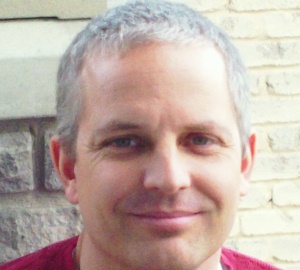 Author: Karl Garner I was a Case Manager at inREACH a focus on employment for the youth. I am currently working at John Howard Society with the Youth in Transition Program, a program for Crown Wards. And want to know a fun fact…? I still play my major passion every week…HOCKEY!
Author: Karl Garner I was a Case Manager at inREACH a focus on employment for the youth. I am currently working at John Howard Society with the Youth in Transition Program, a program for Crown Wards. And want to know a fun fact…? I still play my major passion every week…HOCKEY!
Posted on: April 1st, 2014 by Smart on Crime
I spent a couple years working as a Youth Outreach Worker with inREACH. I spent most of my time in the Preston Heights neighborhood and also in the Paulander community. I was part of the Community Mobilization phase of this pilot project and assisted the youth in running events/programs.(ie.. Art Studio, weekly youth drop-in, sports evenings, homework help group,..) Our approach with youth was very relational and strength-based. inREACH provided an environment that definitely steered us away from the traditional way of working with youth.
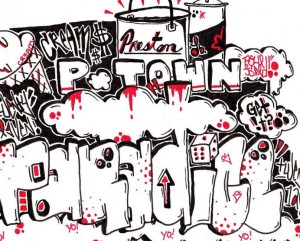 A big part of these two years was assisting the youth in opening a Youth Art Studio. This studio gave opportunities for at-risk youth to express themselves through the creative arts. It gave the youth a chance to engage in a new and healthy outlet to express their emotions, as well as cope with current and past adversities. I also assisted these youth in running their very first Art Show at a local gallery. Some sold their art, some made the paper; but more importantly I noticed a huge boost of confidence in each of the youth who took part in this.
A big part of these two years was assisting the youth in opening a Youth Art Studio. This studio gave opportunities for at-risk youth to express themselves through the creative arts. It gave the youth a chance to engage in a new and healthy outlet to express their emotions, as well as cope with current and past adversities. I also assisted these youth in running their very first Art Show at a local gallery. Some sold their art, some made the paper; but more importantly I noticed a huge boost of confidence in each of the youth who took part in this.
Over the years I always found the act of creating art a very therapeutic experience for the youth I worked with.
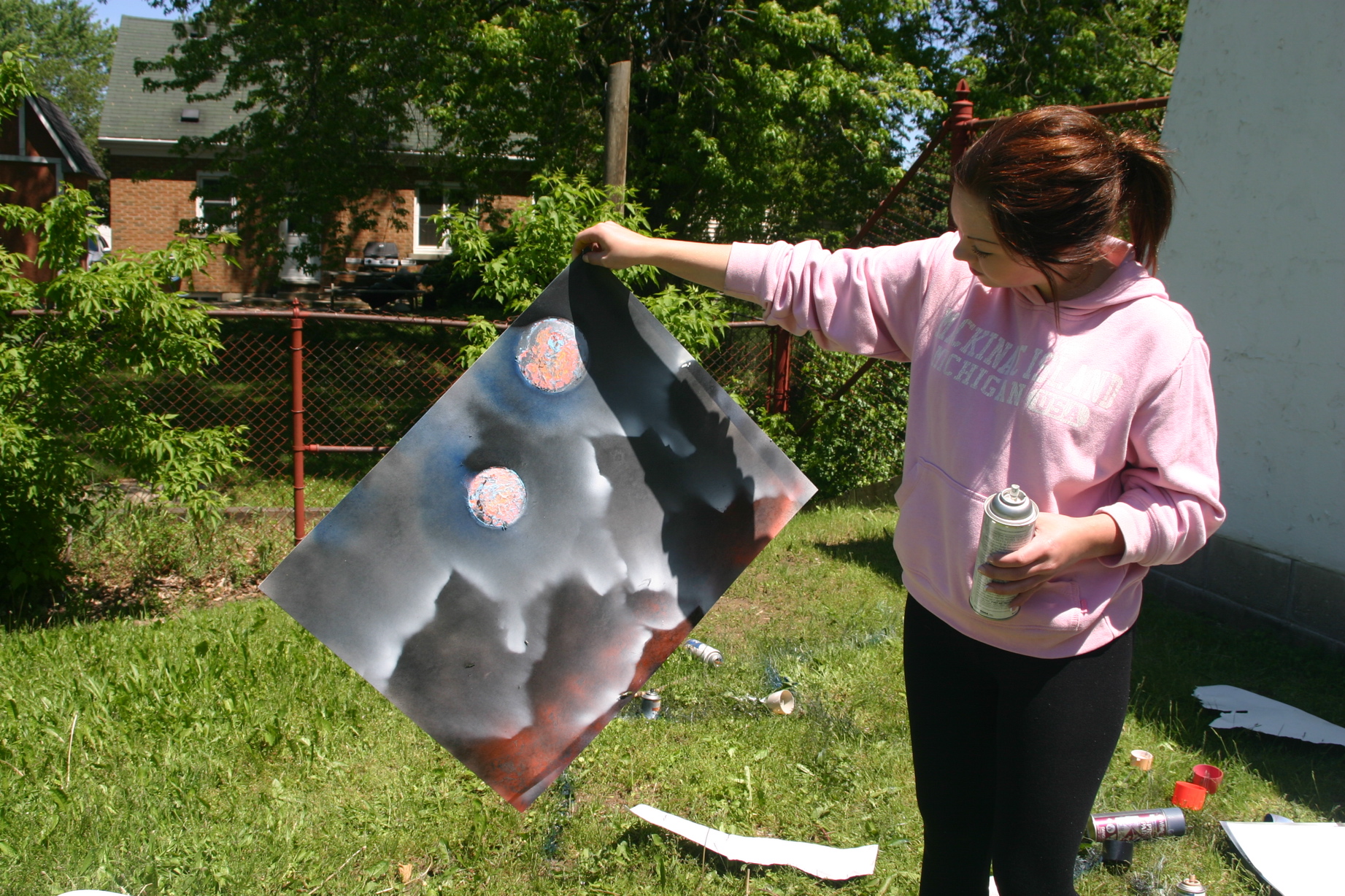
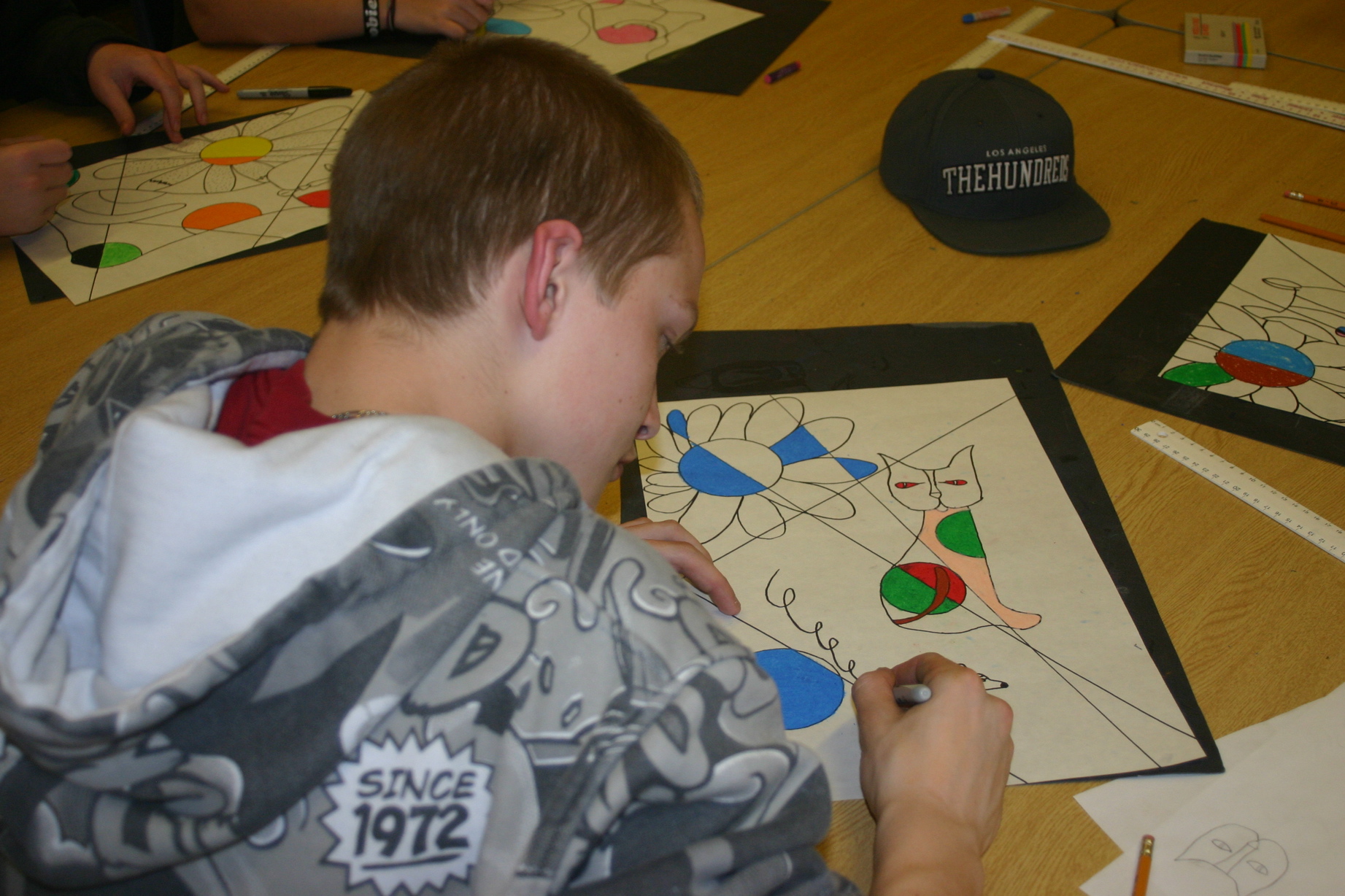
With inREACH closing due to lack of sustainable funding, I decided to start a for-profit business that would fund an Art’s program for at-risk youth. I started Art Innovators Waterloo Region. I hired a team of Art Instructors in the beginning of 2013, and we now provide after school/lunch time Art Programs in over 30 schools within 7 local School Boards. These programs are all parent paid. We also now run Art Camps, Corporate Team building Art Classes and Seniors Art programs. I use the profits from these programs to fund art programs for at-risk and disadvantaged youth.
I run programs in local alternative schools and youth shelters like Argus (males), Argus (females), Monica Ainslie Place, New Dawn, New Way, etc. I am even able to continue to connect with some of the youth I had worked with through the inREACH project. I am very excited to be running an art program with Community Justice Initiatives in a local Custody facility (GVI). I am also able to offer free scholarships to many families who cannot afford our Art Program in each of the schools we partner with. One of my free art programs starts next week in a Waterloo Region Catholic school in the Paulander Neighborhood.

I feel that my experience with inREACH had an important part to play in starting Art Innovators here in the Waterloo Region.
 Author: Paul Field
Author: Paul Field
I am the middle child of 7 brothers and grew up in the country. I spent the last dozen years working in the Social Work Field in settings such as Schools, Group Homes, Rehabs and Youth Drop-in Centers. My passions have always been working with youth, travelling and creating Art. I am blessed with my beautiful wife Liana and two amazing children; Willow and Lachlan!


 On Friday April 11th, the Waterloo Region Crime Prevention Council hosted “Engaging Marginalized Youth: Harnessing Experience from the InREACH Project” to provide a space for a diverse group of community members – individuals, agencies and neighbourhoods that were involved in the InREACH project – to begin moving from idea to action. Our community learned some very
On Friday April 11th, the Waterloo Region Crime Prevention Council hosted “Engaging Marginalized Youth: Harnessing Experience from the InREACH Project” to provide a space for a diverse group of community members – individuals, agencies and neighbourhoods that were involved in the InREACH project – to begin moving from idea to action. Our community learned some very  Author: Catherine Latimer spent many years as a legal policy analyst for the federal government, both at the Privy Council Office and later as the Director General of Youth Justice Policy at the Department of Justice.
Author: Catherine Latimer spent many years as a legal policy analyst for the federal government, both at the Privy Council Office and later as the Director General of Youth Justice Policy at the Department of Justice.


 Author: Karl Garner I was a Case Manager at inREACH a focus on employment for the youth. I am currently working at
Author: Karl Garner I was a Case Manager at inREACH a focus on employment for the youth. I am currently working at  A big part of these two years was assisting the youth in opening a Youth Art Studio. This studio gave opportunities for at-risk youth to express themselves through the creative arts. It gave the youth a chance to engage in a new and healthy outlet to express their emotions, as well as cope with current and past adversities. I also assisted these youth in running their very first Art Show at a local gallery. Some sold their art, some made the paper; but more importantly I noticed a huge boost of confidence in each of the youth who took part in this.
A big part of these two years was assisting the youth in opening a Youth Art Studio. This studio gave opportunities for at-risk youth to express themselves through the creative arts. It gave the youth a chance to engage in a new and healthy outlet to express their emotions, as well as cope with current and past adversities. I also assisted these youth in running their very first Art Show at a local gallery. Some sold their art, some made the paper; but more importantly I noticed a huge boost of confidence in each of the youth who took part in this.


 Author: Paul Field
Author: Paul Field